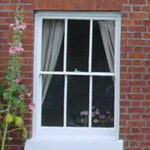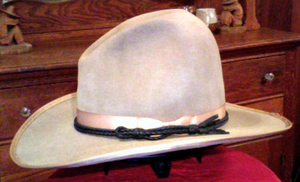Storm windows are one of the simplest ways to lower your heating bills. Learn how to install storm windows and you can not only reduce the amount of heat lost through your home’s windows by up to 40%, but save on installation fees, too.
Combination storm windows-double- and triple-track storm windows-are the most popular models used on double-hung windows. These storm windows are hung on the exterior and, because they allow you to open the main window, they don’t have to be taken down and re-installed every year. It takes just a few minutes to learn how to install storm windows like these and installation itself usually takes around 15 minutes.
If you’ve decided to install storm windows, make sure you choose a quality product. Cheaper models may lack important weather-proofing features. On well constructed storm windows, the sash tracks (metal grooves the sashes sit in) should be deep enough not to let air through. Corner joints should be the overlapping or interlocking type, which prevent air leakage. Also make sure there’s weatherstripping around any moveable joints. Because storm windows can come in dozens of different sizes, before you buy measure the opening of your main window to make sure you get the right size.
When you buy your storm windows, keep in mind that some sales outlets include the price of installation in the price of the windows. Let the sales person know you’re going to install the storm windows yourself and you could save some money on the purchase price.
What you’ll need
Storm windows
Exterior grade adhesive or caulk (not silicon)
Caulk gun
Drill
Sheet metal screws (typically size #4)
Check the window’s fit
Combination storm windows are attached directly to the outside window stop (the framework that holds the glass), so they should be about the same size as the main window. Before you install the storm window, set it in place to check that it fits correctly. If there are pre-drilled screw holes in the flanges, make sure you can get them all centered over the wood of the window stop.
Prepare the storm window
Because you’ll need to fasten the storm window down with screws while it’s mounted on the main window stop, it’s easier to prepare the window before you hang it. If your window doesn’t have pre-drilled screw holes, drill holes in the flanges of the storm window, spaced about 12 inches apart. Apply the caulk
When you’re ready to install the storm window, apply caulk or adhesive to the outer edges of the window stop at the top and sides. Take care to distribute the caulk evenly because lumps can cause the window to become misaligned. Hold off caulking the bottom edge until you’ve installed and fastened down the storm window.
Put in the window
Press the storm window into the opening, centering it between the side stops of the main window. The bottom edge of the storm window should be touching the windowsill. Leave a slight gap at the top so the casing has room to expand with temperature changes. Make absolutely sure the window is straight. If it’s crooked, the seal won’t be secure and will allow air to leak in. When you’ve got the window in place, check that both the window sashes and screen sash move smoothly. If they don’t, it most likely means the frame isn’t straight and you’ll need to adjust it.Fasten and window in place
Startingat the top of the window, fasten the window down by using a drill to install sheet metal screws in the pre-drilled holes. Then continue installing the screws along the three remaining sides of the storm window. Take care not to over-tighten the screws, which can warp the frame.
When you’ve got the screws in, you can caulk the bottom edge of the window. On most storm windows there are small holes (in addition to pre-drilled screw holes) in the bottom flange of the window. Don’t caulk these closed because they provide the ventilation needed to prevent condensation from accumulating. If your window doesn’t have these, leave two evenly spaced 1/4-inch opening along the windows bottom edge.
Finally, make sure the extender at the bottom edge of the window is touching the main windowsill. To hole it in place, install screws not through the extender itself, but in the sill such that the screw’s heads secure the edge of the extender.
Check your work
Once you’ve installed the storm window, check that the caulk seal around the edge is tightly closed (except for the ventilation holes) and that the frame is set in straight and not warped near the screw holes. If everything looks good and the sashes move smoothly, you’re done with the installation.
Storm windows are a great do-it-yourself way to weatherproof your home. By learning how to install storm windows yourself you can not only improve the energy efficiency of your home and lowering your heating bills, but save money on the installation, too.




